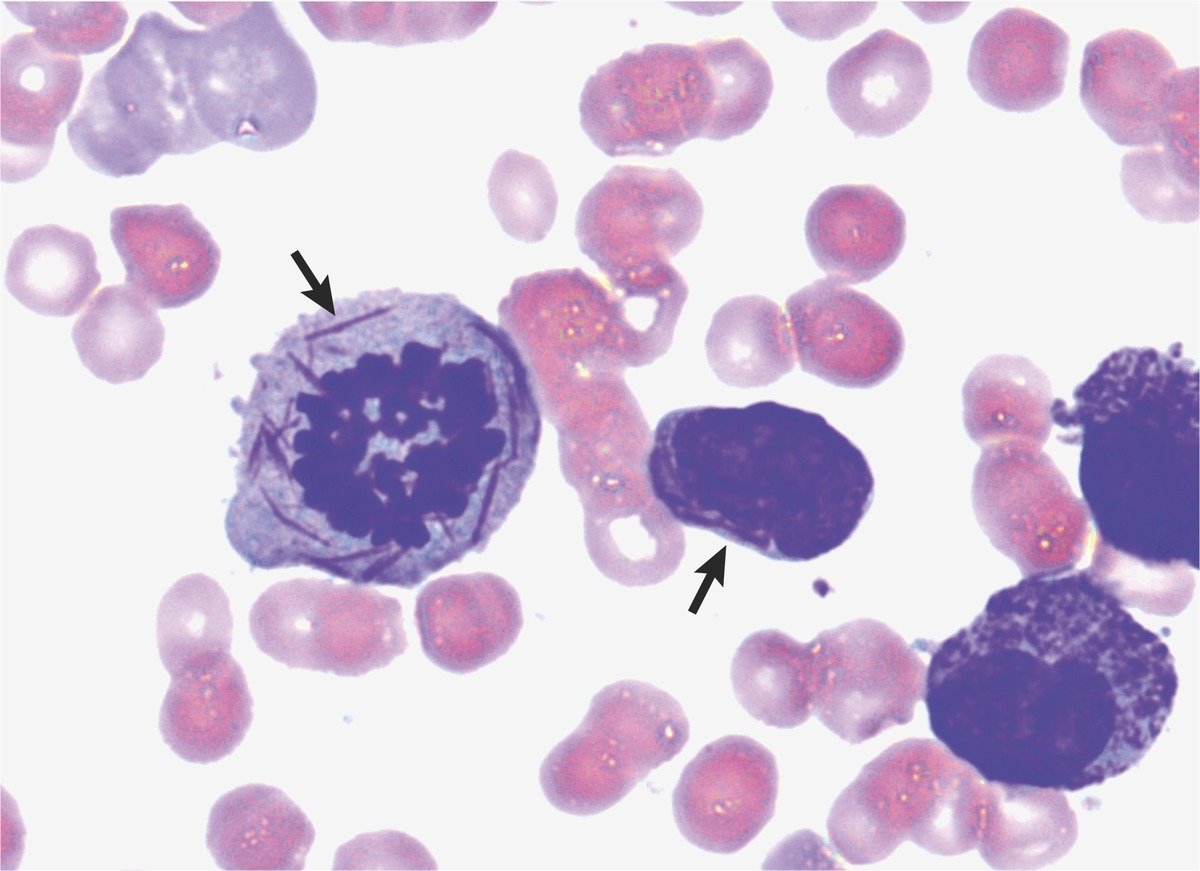Makindo Medical Notes.com |
|
|---|---|
| Download all this content in the Apps now Android App and Apple iPhone/Pad App | |
| MEDICAL DISCLAIMER:The contents are under continuing development and improvements and despite all efforts may contain errors of omission or fact. This is not to be used for the assessment, diagnosis or management of patients. It should not be regarded as medical advice by healthcare workers or laypeople. It is for educational purposes only. Please adhere to your local protocols. Use the BNF for drug information. If you are unwell please seek urgent healthcare advice. If you do not accept this then please do not use the website. Makindo Ltd | |
Acute Promyelocytic Leukaemia (APML)
-
| About | Anaesthetics and Critical Care | Anatomy | Biochemistry | Cardiology | Clinical Cases | CompSci | Crib | Dermatology | Differentials | Drugs | ENT | Electrocardiogram | Embryology | Emergency Medicine | Endocrinology | Ethics | Foundation Doctors | Gastroenterology | General Information | General Practice | Genetics | Geriatric Medicine | Guidelines | Haematology | Hepatology | Immunology | Infectious Diseases | Infographic | Investigations | Lists | Microbiology | Miscellaneous | Nephrology | Neuroanatomy | Neurology | Nutrition | OSCE | Obstetrics Gynaecology | Oncology | Ophthalmology | Oral Medicine and Dentistry | Paediatrics | Palliative | Pathology | Pharmacology | Physiology | Procedures | Psychiatry | Radiology | Respiratory | Resuscitation | Rheumatology | Statistics and Research | Stroke | Surgery | Toxicology | Trauma and Orthopaedics | Twitter | Urology
Related Subjects: |Leukaemias in General |Acute Promyelocytic Leukaemia |Acute Myeloblastic Leukaemia (AML) |Acute Lymphoblastic Leukaemia (ALL) |Chronic Lymphocytic leukaemia (CLL) |Chronic Myeloid Leukaemia (CML) |Hairy Cell Leukaemia |Differentiation syndrome |Tretinoin (All-trans-retinoic acid (ATRA) ) |Haemolytic anaemia |Immune(Idiopathic) Thrombocytopenic Purpura (ITP)
Acute Promyelocytic Leukaemia (APML) is a subtype of Acute Myeloid Leukaemia (AML) characterized by the accumulation of abnormal promyelocytes in the bone marrow and blood. APML is a distinct form of leukaemia due to its specific genetic mutation and its association with a high risk of bleeding and clotting disorders. However, it is also one of the most treatable forms of AML when identified and treated promptly.
About
- A form of AML with a predisposition to DIC
- It can be treated with all trans retinoic acid (ATRA)
- ATRA allows the further differentiation of promyelocytes
- APML may cause DIC which can worsen with therapy
Give all-trans-retinoic acid (ATRA), stimulates the cells to resume differentiation. Know Translocation t(15;17)
Aetiology
- AML is due to the formation of clonal proliferation of myeloid precursors with reduced capacity to differentiate into more mature cellular elements.
- The increased production of malignant cells, along with a reduction in these mature elements, result in a variety of systemic symptoms, anaemia, bleeding, and an increased risk of infection.
- There is a translocation between chromosomes t(15;17) translocation
- The gene on chromosome 17 codes for retinoic acid receptor alpha - RARa
- The gene on chromosome 15 is the promyelocytic gene (PML gene)
- PML-RARa fusion has reduced sensitivity to retinoic acid which blocks differentiation of myeloid cells
Auer rods in APML

Clinical
- Fatigue and weight loss. Anorexia. Evidence of infection or haemorrhage
- Marrow failure with anaemia, low platelets and abnormal WCC
- Severe bleeding, associated with Disseminated Intravascular Coagulation which may occur or be precipitated by cytotoxic treatment
Investigations
- FBC : anaemia, low platelets, high WCC
- Bone Marrow Biopsy: The definitive test for diagnosing APML shows Leukaemic forms. Abundance of promyelocytes with Auer rods found. Marked Low red cells, platelets, WBC (neutrophils) count
- Coagulation Tests: PT, aPTT, and fibrinogen levels Low fibrinogen, Coagulopathy
- Cytogenetic Analysis: Identifies the t(15;17) translocation
- Flow Cytometry: Analyzes specific markers on the leukaemia cells.
Management(See treatment of AML)
- APML is considered one of the most curable forms of acute leukaemia
- Treat with chaemotherapy + ATRA, FFP, Keep platelets > 30-50
- The differentiation can be improved with all trans retinoic acid (ATRA)
- This is a vitamin A derivative that can cause clinical remission.
- The drug allows the neutrophils to continue to develop to maturation.
- Coagulopathy - give platelets, fibrinogen, ATRA
Retinoic acid syndrome.
- Retinoic acid syndrome from ATRA is usually < 3 weeks of treatment.
- Chest pain, fever, and dyspnoea. Hypoxia is common
- CXR: diffuse alveolar infiltrates with pleural effusions. Pericardial effusions
- Release of cytokines. Mortality of retinoic acid syndrome is 10%.
- High dose glucocorticoid therapy is usually effective in treatment